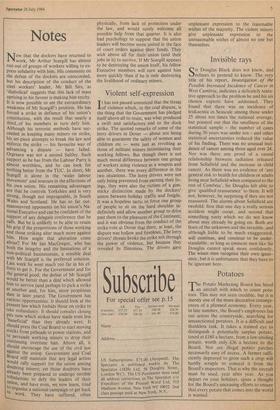Invisible rays
ir Douglas Black does not know, and
■ -.3 refuses to pretend to know. The very title of his report, Investigation of the Possible Increased Incidence of Cancer in West Cumbria, indicates a delicately tenta- tive approach to the problem he and his six chosen experts have addressed. They found that there was an incidence of leukaemia in Seascale among those under 25 about ten times the national average, but pointed out that the smallness of the statistical sample - the number of cases during 30 years was under ten - and other statistical uncertainties reduced the value of his finding. There was no unusual inci- dence of cancer among those aged over 24. Nor was there any proof of a causal relationship between radiation released from Sellafield and the increase in child cancer. As there was no evidence of 'any general risk to health for children or adults living near Sellafield when compared to the rest of Cumbria', Sir Douglas felt able to give 'qualified reassurance' to them. It will not, however, be surprising if they are not reassured. The alarms about Sellafield are twofold: first that one day a really serious accident might occur, and second that something nasty which we do not know about may already be going on. Both are fears of the unknown and the invisible, and although liable to be much exaggerated, will continue, and continue to be under- standable, as long as eminent men like Sir Douglas cannot speak more confidently. The wisest men recognise their own ignor- ance, but it is unfortunate that they have to be ignorant here.










































 Previous page
Previous page